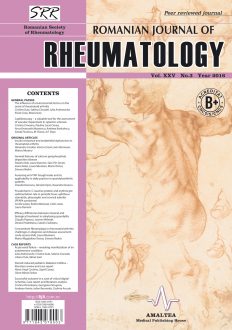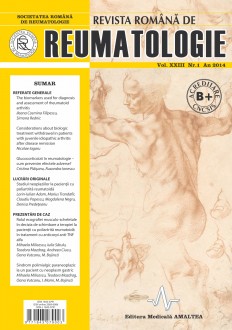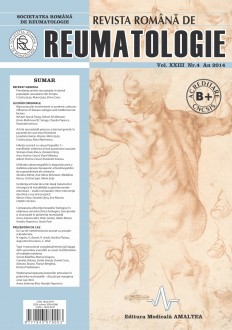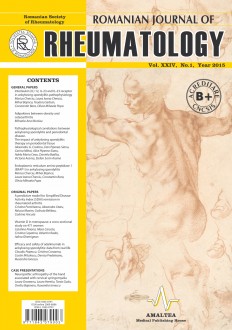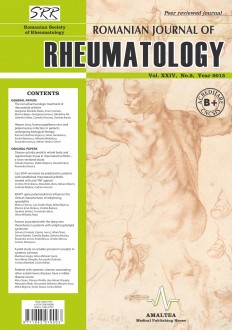SELECT ISSUE
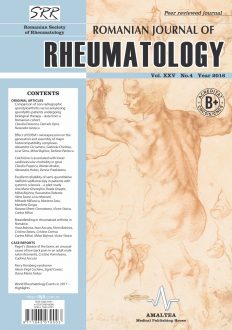
Indexed

| |

|
|
|
| |
|
|
|

|
|
|
|
|
|
| |
|
|
HIGHLIGHTS
National Awards “Science and Research”
NEW! RJR has announced the annually National Award for "Science and Research" for the best scientific articles published throughout the year in the official journal.
Read the Recommendations for the Conduct, Reporting, Editing, and Publication of Scholarly work in Medical Journals.
The published medical research literature is a global public good. Medical journal editors have a social responsibility to promote global health by publishing, whenever possible, research that furthers health worldwide.
Colchicine is associated with lower cardiovascular morbidity in gout
Claudiu Popescu, Warda Abukar, Alexandra Hutan and Denisa Predeteanu
ABSTRACT
Objective. This exploratory study aimes at comparing Romanian gout patients with or without colchicine treatment in order to determine if colchicine is associated with a lower cardiovascular morbidity.
Methods. The study was cross-sectionally designed to include all the patients randomly admitted to the hospital between January and July 2015 and discharged with a diagnosis of idiopathic gout according to their attending physicians. The clinical observation sheets served as retrospective sources of information regarding study variables (demographics, addictive behavior, gout phenotype and treatment, cardiovascular morbidity). Data analysis included non-parametric tests and binary logistic regressions (significant if p < 0.05).
Results. The sample included 96 subjects, predominantly men (77.1%), with a mean age of 62.7 years. 60 (62.5%) subjects received colchicine. Compared to patients who didn‘t receive colchicine, they had a significantly lower prevalence of ischemic heart disease, chronic heart failure and atherosclerosis (p < 0.05). Colchicine was a significant protective factor for atherosclerosis (OR = 0.243; 95% CI: 0.076-0.784).
Conclusions. Primary and secondary cardiovascular prevention may benefit from low doses of colchicine. Further prospective blind randomized clinical trials are needed to test these hypotheses.
Keywords: colchicine, atherosclerosis, chronic heart failure, gout

